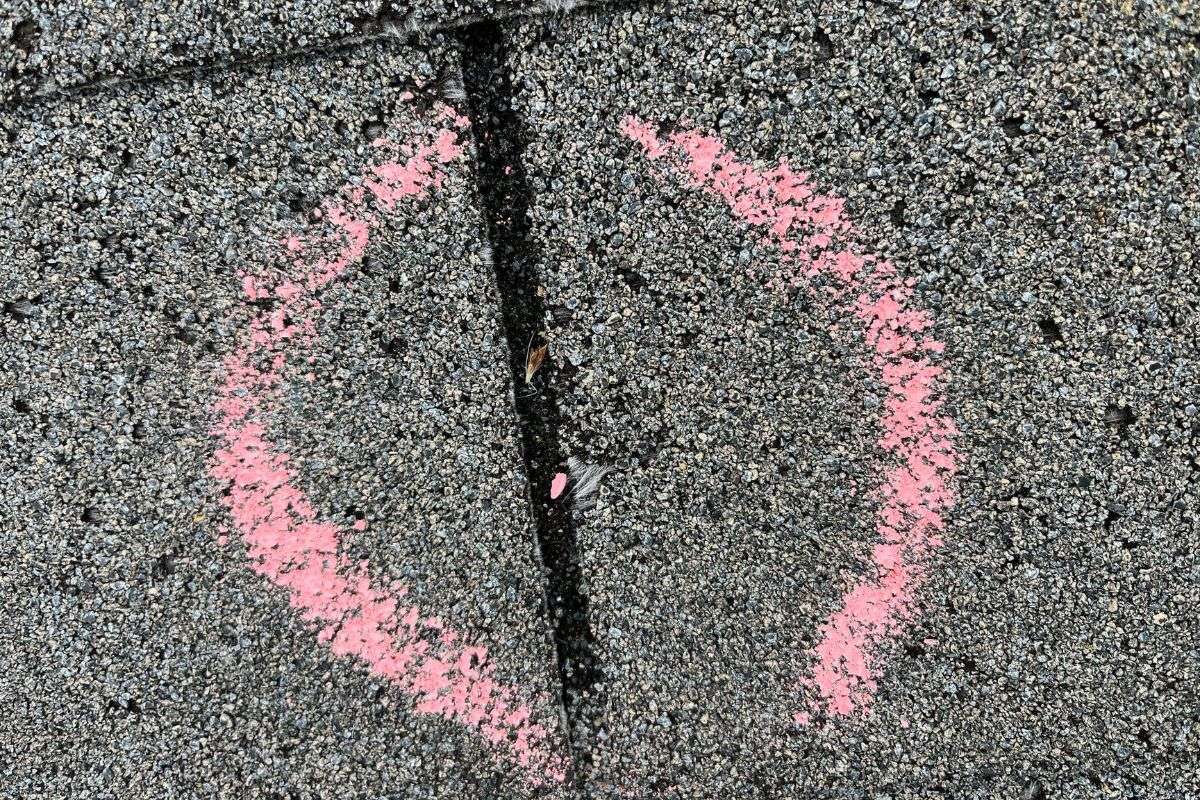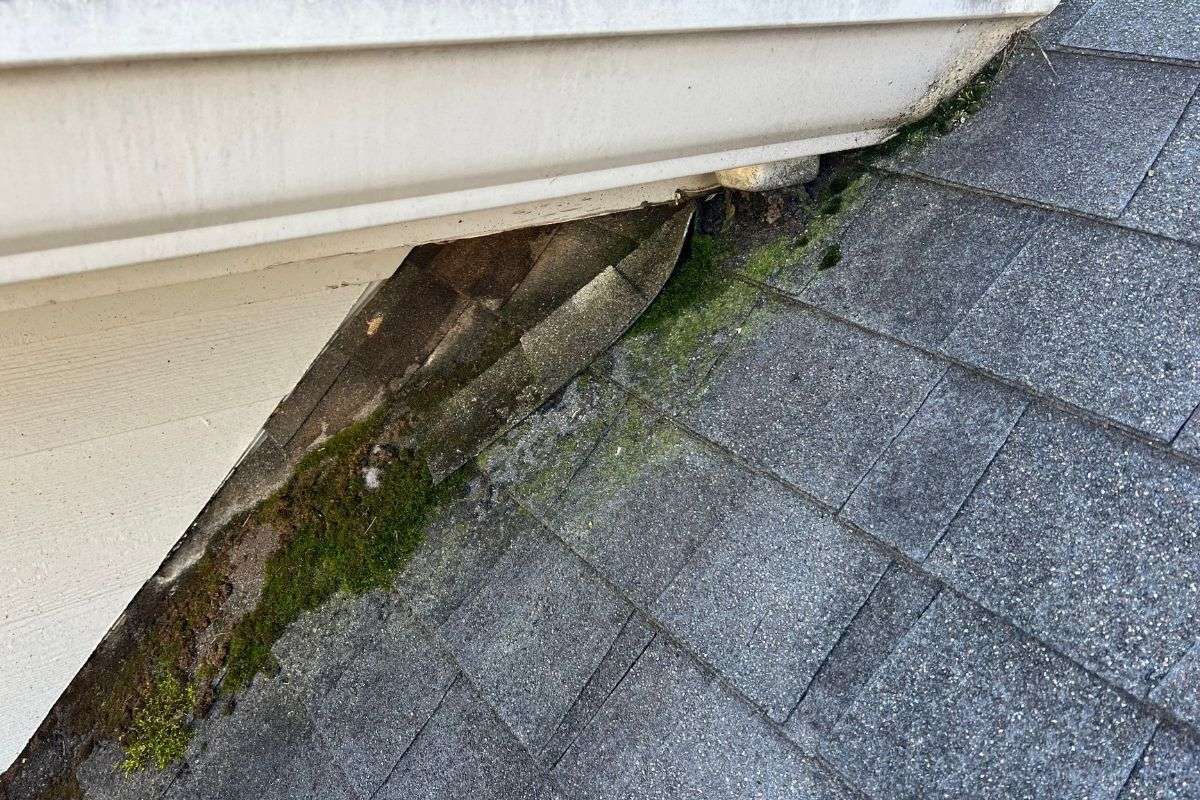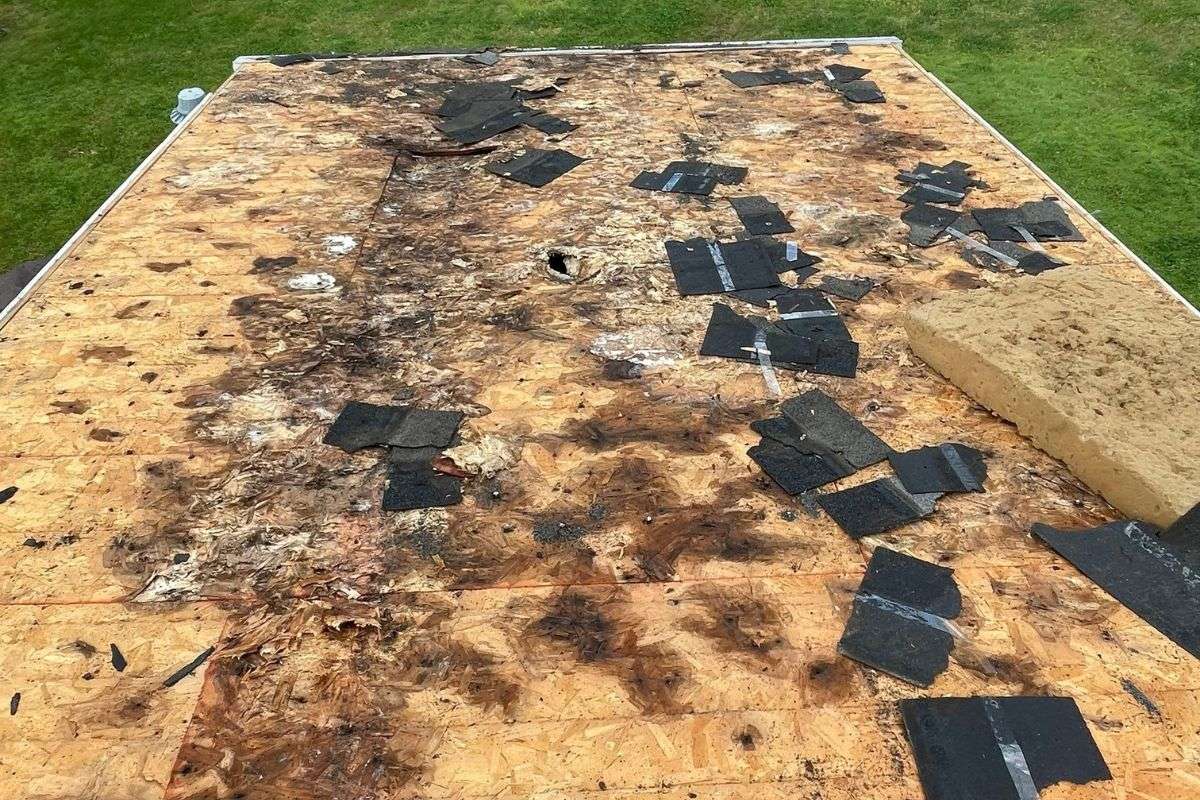Signs and Risks of Waiting on a Roof Leak
Roof leaks are more common than you’d think and can lead to serious damage if ignored. They’re not just annoying—they can also cause costly problems and even pose health risks. The tricky part? Roof leaks aren’t always easy to spot.
Catching them early is the best way to avoid bigger headaches down the road. In this article, we’ll walk you through the signs of a roof leak and why it’s so important to tackle repairs sooner rather than later.
Signs You Might Have a Roof Leak
Cracks in Your Ceiling
Noticing cracks or water stains on your ceiling? This could be a sign of roof trouble. Whether it’s small discolorations or larger wet spots, it’s worth checking out sooner rather than later to avoid bigger problems down the road.
Water in Your Attic
Got water in the attic? That’s a red flag. Check for damp insulation, wet wooden beams, or even puddles. If you spot any of these, it’s time to act fast before the damage spreads.
A Sagging Roof
A sagging roof isn’t just an eyesore—it’s a serious issue. It could mean water damage, structural issues, or too much weight on the roof. Don’t wait on this one—get it checked out ASAP to avoid any major disasters.
Water Stains on Your Ceiling
Stains or discoloration on your ceiling are clear signs of water damage and roof leaks. If you see them, call a professional to figure out the source of the leaks and save you from bigger headaches later.
Damaged Shingles
Missing or cracked shingles might not seem like an issue, but they can leave your roof exposed to leaks and even mold. Fixing them quickly is an easy way to keep your roof in good shape.

Clogged Gutters
Clogged gutters can cause water to back up onto your roof—hello, leaks and water damage. Regularly cleaning them or adding gutter guards can help you avoid this hassle.
Improperly Installed Roof Flashing
Roof flashing, the material around vents and chimneys, is there to keep water out. If it’s damaged or wasn’t installed correctly, water can sneak in. Proper maintenance here goes a long way.
Cracked or Missing Roof Boots
Roof boots (the covers around pipes and vents) are tiny but crucial to preventing leaks. Over time, they can crack or wear out, so regular inspections are key to keeping them effective.
Overhanging Tree Branches
Tree branches hanging over your roof? Not a great idea. They can scrape your roof, break during storms, or even let pests get too close. Trimming them back is an easy fix to protect your home.

Moss and Algae Growth
Moss and algae might look harmless, but they trap excess moisture and can damage your shingles over time. Cleaning them off or treating your roof can help prevent long-term issues.
Recent Storm Damage
Storms can do a number on your roof, whether it’s missing shingles, cracks, or hail damage. After a storm, it’s smart to inspect your roof or get a pro to take a look.
Skipping Routine Inspections
Even if your roof looks fine, routine inspections every 3-5 years are a must. Roofs naturally wear down over time, and regular checkups help catch small problems before they turn into bigger ones.
An Aging Roof
If your roof is over 10 years old, it’s time to give it some extra attention. Roofing materials wear out with time, especially in harsh weather. A quick inspection can help you plan for repairs or a replacement when it’s needed.
Taking care of your roof shouldn’t be complicated. Keep an eye out for these signs, and a little maintenance now can save you from roof repairs later!
The Real Danger of Waiting on a Roof Leak
Mold Growth
How It Happens:
When water sneaks under your shingles, it creates the perfect damp spot for mold and mildew to thrive. Once mold grows, it doesn’t stay put—it can spread to your walls, floors, and ceilings, especially in warm, humid climates where moisture does all the dirty work faster.
Why It’s a Problem:
Mold isn’t just ugly; it’s a real danger to your home and your health. It can weaken your roof and other parts of your house, while mold spores in the air can trigger respiratory problems, allergies, or skin irritation. If you or your family have asthma or health conditions, the risks are even higher. And if the mold produces toxins (called mycotoxins), it can lead to more severe issues like a weakened immune system or neurological problems.
Getting rid of mold is no small task—it’s expensive, time-consuming, and often means tearing out and replacing materials in your home. Fixing a roof leak early is a much easier, cheaper way to prevent mold growth and expense.
Structural Damage
What Happens:
Water and wood don’t mix well. When water seeps into your roof, it can rot the wooden beams that support it. Over time, this can cause sagging ceilings, weakened walls, or, in the worst-case scenario, a roof collapse.
Why It Matters:
A small leak may not seem like an issue, but over time, it can lead to massive structural issues. During heavy rain, snow, or strong winds, a damaged roof simply can’t hold up as well, putting your home and family at risk. And if moisture reaches your attic or other parts of your home, it can cause even more damage, weakening rafters and insulation.
By fixing leaks early, you can avoid major headaches, keep your home structurally sound, and save yourself from a long list of expensive repairs.

Higher Energy Bills
What Happens:
A leaky roof doesn’t just let water in—it can also let air out. When insulation gets wet or gaps form in your roof, your home becomes less energy-efficient. This means your heating and cooling systems have to work harder to keep your home comfortable.
Why It Matters:
A roof leak can cause your energy bills to spike and put a strain on your HVAC system, which could lead to costly repairs or even an early replacement. Fixing the problem early keeps your home energy-efficient and helps your heating and cooling systems last longer.
Pest Problems
What Happens:
A leaky roof is basically an open invitation for pests. Damp, decaying areas attract everything from termites and ants to rodents like rats and squirrels. These critters can sneak in through gaps in shingles or flashing, especially when it’s cold outside.
Why It’s a Problem:
Pests can wreak havoc on your home. Termites can chew through wooden beams, and rodents can gnaw on electrical wires, which could lead to fires or malfunctions. Plus, pests can carry diseases and make allergies or asthma worse.
Getting rid of an infestation can cost a fortune and often requires professional help. Tackling roof leaks early and keeping up with inspections can stop pests from making your home their new hangout.
Got a Roof Leak? Here’s What to Do
Noticed a leak in your roof? Don’t panic, but don’t ignore it either! Taking care of a roof leak quickly can save you money, protect your home, and keep things cozy and safe.
First things first, look for signs like ceiling stains, dripping water, or damp spots in the attic. Found something? Time to figure out where the leak is coming from.
Check your roof for missing shingles, cracks, or damaged flashing. But remember—roof inspections can be tricky (and not the safest task), so don’t hesitate to call a roofing professional if you’re unsure.
For bigger leaks or if climbing onto the roof isn’t your thing, reach out to a professional roofer. They’ll pinpoint the problem, fix the leak, and help prevent water damage or mold. The sooner you tackle it, the less stress (and cost) you’ll face later on!
